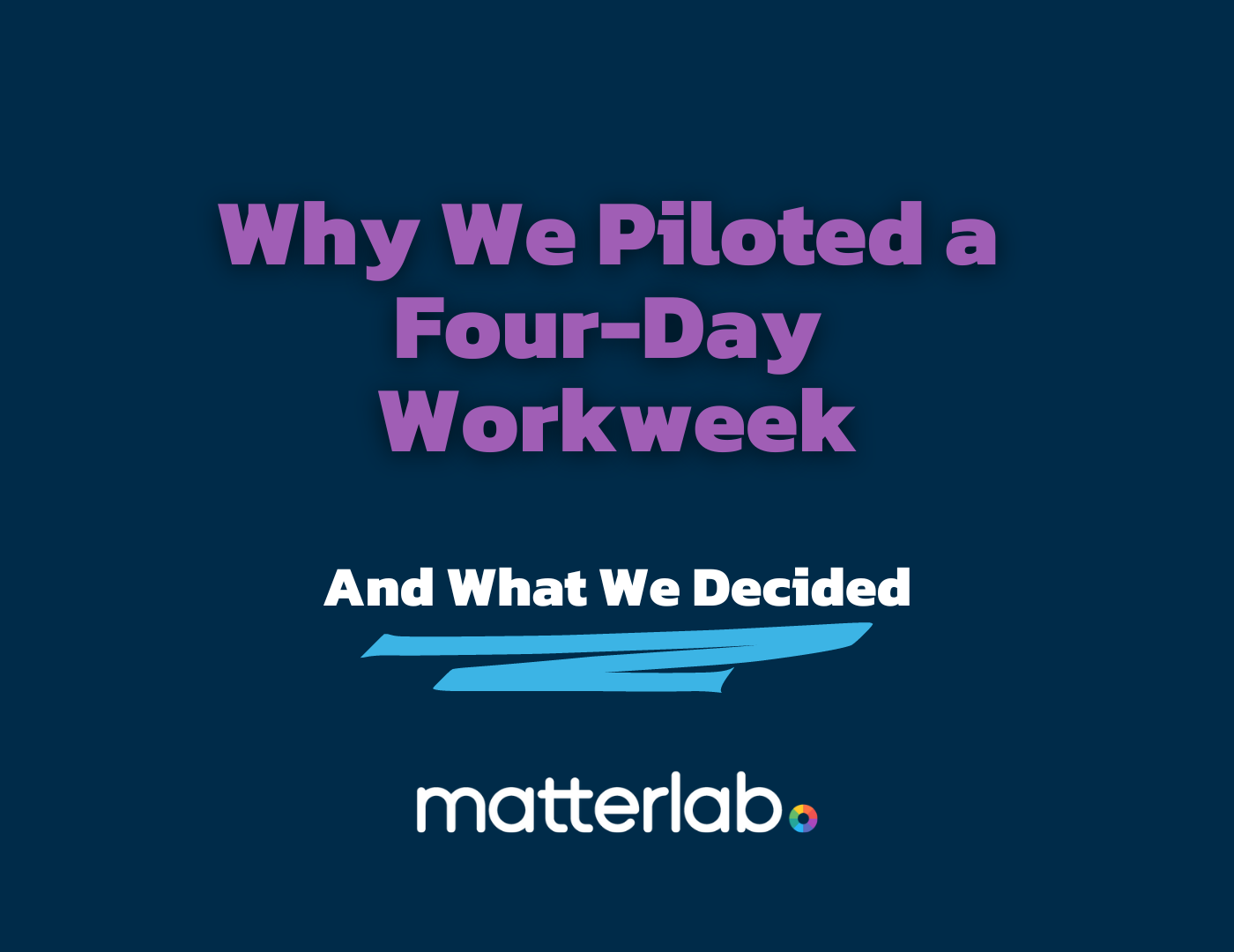What if we saw time differently?
What if we could work less and work better?
We asked ourselves that question as a team and launched a four-day workweek pilot: working Monday through Thursday, eight hour days, closed Fridays, with no reduction in pay. We considered the pilot from every angle: availability to clients, adequate time to work through proper processes, team member well-being, market need, and more.
As a founder, I’ve been grinding away in one way or another for years. I don’t want that for my team, and I don’t want that for myself anymore. Nor do I think it leaves room for the strongest strategic insights or creative output. It was time for a change.
Creativity requires time, strong planning, healthy boundaries, and a resistance to rushing. Time well spent is less about the amount of time and far more about the allocation of the time you have.
We’re part of a global four-day workweek pilot. There are teams all over the world trying it out. Early data indicate that for companies moving to a four-day workweek, employee stress decreases and health increases, revenue increases (as much as 35%!), and retention skyrockets. So we went into the pilot with open minds and big hopes that the shift would help us prioritize more effectively and succeed more easily. We rejected the culture of busyness and the notion that time spent is proportional to value created. And we increased our bar for quality while reducing the number of hours spent working each week.
Getting all of this done was no small feat, and it required meaningful shifts to our ways of working for everyone on my team. From meeting cadence, to reviewing our values, to additional role clarity, we positioned the team to work better — in less time. We imagined fewer meetings, better meetings, and longer stretches of time for working in the creative zone, independently or collaboratively. We understood from those who have piloted before us that work often grows to fill the time it has, and that with less time, we could get just as much or more done.
When we launched the pilot, we expected to feel more satisfied both in work and out of work, and that that satisfaction would make our creative output even stronger. We envisioned our Fridays to be like well-spent Saturdays and Sundays – a time to rest, recharge, and reset. A chance to breathe. A chance to think and stay inspired, free of the often-unproductive hustle that a standard workday brings.
Here’s what we learned:
It can work. It’s working here.
The four-day workweek boosts our productivity, efficiency, wellbeing, and creativity — all at the same time. Name me something else that can do all of that.
We now get more of the right stuff done, we do less of the stuff we didn’t really need to do in the first place, and we’re experiencing an overall improvement in both quality and quantity of strategic insight and creative output.
We make every meeting count – we marry strategy and collaboration so that our meeting time doesn’t take away from work time but instead is the work time.
Working (mostly) asynchronously allows the team to put their time in when their brains are at their best and their clients need them most. Nobody knows when those two times are better than they do.
We don’t have it all figured out…yet.
Though the pilot proved that the four-day workweek accomplished better, smarter outcomes, we are still figuring out how to prevent the “crunch” feeling around noon on Thursday when we re-realize it’s the final working day of the week, and how to decide what to say no to. We are also still figuring out how to stick to the 32 hours.
If I’m being completely transparent, we’re a team of high achievers and serial doers, so one of the biggest challenges has been to set the example of working fewer hours. Changing habits is hard work.
I’ll leave you with this:
There are 168 hours in a week. A solid third should be spent sleeping. (Nobody will ever convince me that we need fewer than 8 hours of sleep, and that adds up to 56 hours.) And here at Matterlab, we spend 32 hours working — roughly 20% of our total week, and roughly 30% of our waking hours. That feels right. That feels sustainable. That feels like working to live, not living to work.
While we don’t yet have long-term data on the reduction in stress, increase in health and retention, and impact on profitability, we’ve learned enough to know that it works. For our business, in our sector, it made sense. So it’s now a core component of our organizational culture. We’re proud to be one of the early adopters of a global trend in ways of working, and we’re proud of our team for all of the hard work that went into making the switch.
We work to transform life outcomes for children and families through our clients, and we also work to build beautiful lives for our own families. Both are possible when you prioritize people over profit and impact over input. If you or a team you know would like to know more about our work, head over to Services Page or contact our Associate Director of Business Development team, Angie Julius, at ajulius@matterlab.org.

